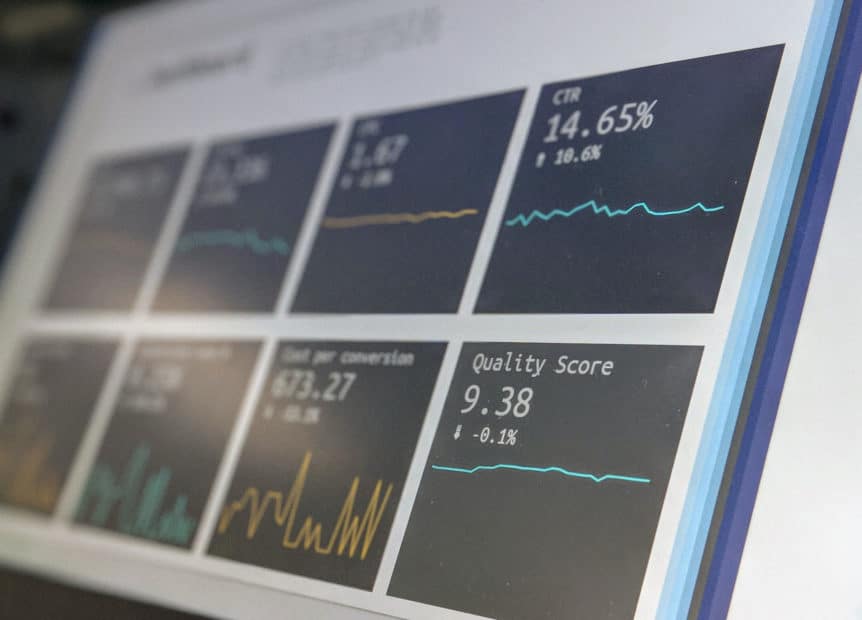While famed business management consultant Peter Drucker (a la the Drucker Institute), once said, “If you can’t measure it, you can’t improve it,” the challenge in 2021 is not a lack of metrics and data, but the overwhelming volume of them. Whether it is the influx of voluminous and complex business data from advanced IT systems that management teams are trying to manage, or the flurry of daily pandemic updates that come across everyone’s newsfeed, the shift to the quantification of nearly every aspect of life over the past two decades is only going to accelerate. As such, it’s important to understand the similarities and differences between Business Metrics and Key Performance Indicators (KPIs) is clear.
So, is there a difference between Business Metrics and Key Performance Indicators? And if there is, why should you care?
We believe there is. Metrics is a broad term describing quantitative assessments tracking performance in a plethora of different settings. Business metrics specifically track company activities that provide a sense of how effectively those business activities are being accomplished. Key Performance Indicators (KPIs) are sometimes viewed as a particular type of business metric or as being synonymous with them, but treating business metrics and KPI as separate analyses allows additional insights into understanding a company’s status and health that can make the difference between long-term failure and success.
DEFINING KPI
Key Performance Indicators are quantifications of how well your business is attaining your company-wide objectives. This is a strategic assessment tool. In other business literature, what we are speaking of here is sometimes described as a strategic KPI.
DEFINING BUSINESS METRICS
Business Metrics are quantifications of defined activities within your business. This a tactical assessment tool. When the term KPI is used loosely, these are sometimes described as operational or tactical KPIs.
STRATEGY vs TACTICS
To understand the difference between strategy and tactics, we’ll use an example from military history. Take for example WWII: one of General Eisenhower’s key strategic objectives in Europe was to defeat Germany. To accomplish this strategic goal, he employed a series of tactical objectives. The first was to land at Normandy, establish a defendable presence and then begin to push further into Europe.
For your company, KPIs should be used to measure strategic progress, whereas business metrics should measure tactical performance. Metrics should be used to measure and report on how well particular company activities are being performed. If those individual activities are successful, they serve to move your enterprise closer to attaining company-wide strategic objectives. KPIs should measure your company’s progress toward those larger strategic objectives.
STRATEGIC KPIs vs BUSINESS METRICS – AN EXAMPLE
Here is an example using a hypothetical real estate company XYZ. XYZ believes in “managing by the numbers,” and they hired a numbers-driven consulting company to set up data gathering systems and a dashboard that displays that data in real time.
Some of the business metrics gathered and displayed are:
- Total number of buildings
- Total capacity per building/floor
- Total guest headcount per building/floor
- Area (square foot) per person per building
- Current utilization per building and by floor
- Current total vacancies for entire portfolio (sq. feet and average %)
- Current and projected space supply vs demand
- Cost per area per square footage
- Total number of outside vendors
- Total billing per vendor at any time
- Current and projected churn rate
The above are a small sample of the types of business metrics that could be gathered – and they are all based on facts and are useful in different ways. At the same time, any of these above metrics reviewed independently or even simultaneously will not give a clear indicator of whether XYZ is moving closer or further from its strategic goals.
What is an example of an XYZ strategic goal and how it relates to their KPIs and business metrics? XYZ believes that consumer demand for their properties will stay soft in 2021 and then bounce back in 2022 with a vengeance. They also believe many of their competitors do not have the cash needed to last another year. Given their strong lines of credit and liquid cash position, XYZ’s top strategic goal in 2021 is to position themselves to enter 2022 as an industry market leader with unparalleled real estate footprint in their target geographic markets.
Given this strategic goal, a few of their top KPIs include metrics such as:
- Market share of potential rooms in their target geographic markets
- New property acquisition rate and conversion cost ratio in those target areas
- Consumer “likeliness to book a room with us” in their target markets
While a number of the XYZ’s business metrics can feed or be components that feed into their KPIs, it is critical that XYZ keeps the distinction between the two clear and focuses on the right numbers at the right time.
OTHER BUSINESS METRICS – A FEW TO CONSIDER
FINANCIAL METRICS
For many businesses, financial metrics most easily come to mind, especially in relation to objectives surrounding M&A activities. Commonly used financial metrics can be built as a ratio between related activities:
- Profitability ratios – Several metrics which can be used to measure how profitable a company is
- Financial Leverage ratio – Reflects how debt is impacting the company’s financial structure, which can translate into an assessment of the company’s overall risk
- Liquidity ratio – Insight for buyers & management regarding the ability of the company to pay off current debt obligations
Metrics can be built and focused to produce insight using financial statement data: sales, gross margins, EBITDA (see our recent article ), and net income. Each metric is designed to capture something regarding the operational efficiency of the business.
Executives and management use these insights of operations to plot corporate decisions and direction for resource allocation, financing, investments and sales strategy. Metrics from operation’s data, paired with economic forecasts, allows construction of financial models predicting outcomes for company value and growth.
PROJECT METRICS
Project-specific metrics are essential in planning and then evaluating project-level development and investments. Development of these metrics assist analysis for project costs, assets, ROE, quality and progress. Management teams need to understand how profitable and impactful a project will be to the company’s overall performance. Take for example a project to add another manufacturing facility – if the project were to go over budget, it would increase the pay-back period for the expansion project.
Leveraging business performance metrics:
- Business intelligence (BI) – As of December 2019, 90% of global corporations had a Chief Data Officer according to Raconteur. This reflects the importance of mining value out of company data piles, regardless of your company’s size. Businesses without good BI lose to competitors who better deploy resources into markets.
- Decision making – elimination of bias, emotion or outdated knowledge in favor of data-driven decisions and objective reasoning results more often in profits with an understanding of drivers.
- Trend identification – mitigating the effects of a concerning trend or encouraging a positive trend, both result from identification first.
- Progress tracking – growth objectives and company targets are like places on the road of a company’s journey. Business metrics combined with KPIs reveal where on the map the company’s journey has progressed.
Individual business metrics have been combined by some corporations into more comprehensive quantifiers attaining wide recognition and adoption:
- DuPont developed what has become known as the DuPont Analysis Model that isolates factors related to ROE. By decomposing ROE into individual drivers and tracking their financial performance, better insight into maximizing ROE is gained.
- Motorola developed another well-known methodology metric for improving production quality. Called “Six Sigma”, this is a combination of quality related metrics for defining, measuring, analyzing, improving and controlling business, manufacturing or operational processes.
OTHER METRICS
Many other metrics can also provide important information for business owners, investors and buyers. An organization’s health can be evaluated by metrics quantifying customer retention, employee satisfaction, product quality, and increasingly social media metrics. Measurements for your company’s engagement and responses from Facebook, Twitter, LinkedIn, Instagram, and Pinterest may actually become very significant as some business environments continue to be increasingly impacted by social media.
CONCLUSION: BOTH STRATEGIC AND TACTICAL METRICS
KPIs and business metrics specific to your company and industry sector are clearly not just optional but are critical for becoming or remaining competitive and profitable. Virtually any aspect of your company, from discrete activities to general progress, can be quantified and evaluated with business metrics and the amount of data available is only going to continue to grow. As such, the distinction between strategic and tactical metrics is key. The data produced by your business metrics hold the most value when understood in relation to and in light of your company’s overall strategy.

